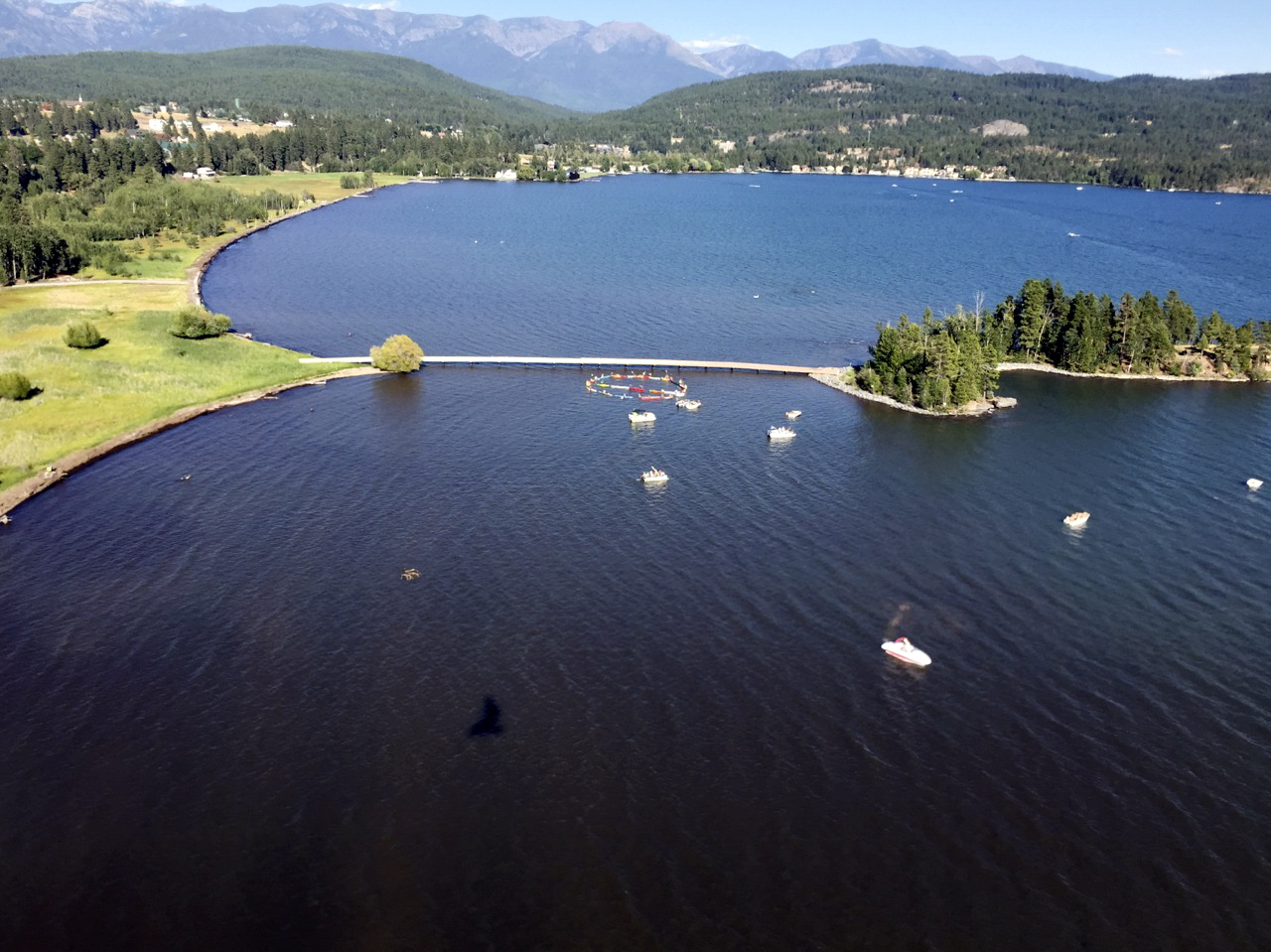North Shore Bridge Remains and Legal Battle Continues
Judge, plaintiffs still awaiting concrete plan for removal
By Micah Drew
The window for winter construction on Flathead Lake, when water levels are low and the lakebed is accessible, is getting shorter. And the plaintiffs in a decade-long legal battle over the “bridge to nowhere” are growing frustrated.
The private bridge that connects the north shore of Flathead Lake to Dockstader Island has been at the center of lawsuits since it was built in 2011 with permits that were challenged by the Community Association for North Shore Conservation (CANSC).
In 2016 Judge Robert Allison ruled that the lakeshore permit was invalid, the structure would have to be removed and the area restored to its natural state, a decision the Montana Supreme Court upheld.
In December of last year, Allison expressed frustration over repeated delays of the bridge removal, including a submitted plan he deemed to have “an absurd level of complexity,” and while the bridge was built with a single permit from the county, the plan to demolish it “calls for at least seven permits, and the involvement of five different agencies.” Allison ordered the appointment of an engineer by CANSC to act as Special Master to develop an expedited plan for removal, to be paid for by defendant Jolene Dugan.
Dugan passed away in September and her father, Roger Sortino, and his company Flathead Properties LLC are now prospective intervenors in the suit.
Sortino has come up with his own cost estimates for the bridge’s removal, most recently a $150,000 plan that includes building a temporary road on the lakebed adjacent to the bridge in order to remove it. The road will span 800 feet of floodplain area on the shore of Flathead Lake.
Sortino has obtained a Corps of Engineers permit to construct the road through the floodplain wetlands. An application for a county floodplain permit states “there are no effective alternatives” to the project.
The plaintiffs CANSC say that instead, the bridge removal should utilize an existing road on an adjacent tract of land, which was used in the initial construction. CANSC has also requested the judge require a deposit of at least $300,000 by Sortino to cover the full cost of the project. In an affidavit from July 1, Sortino stated he would make the deposit by Dec. 15, but no money has been deposited and the judge has not determined a total cost.
“We hope the judge is sufficiently concerned about the information provided and the ongoing timeline,” said CANSC co-chair Dave Hadden. “If the judge requires the money be put in an account, if the county expeditiously handles the application for removal, it’s conceivable the bridge could be out this winter.”